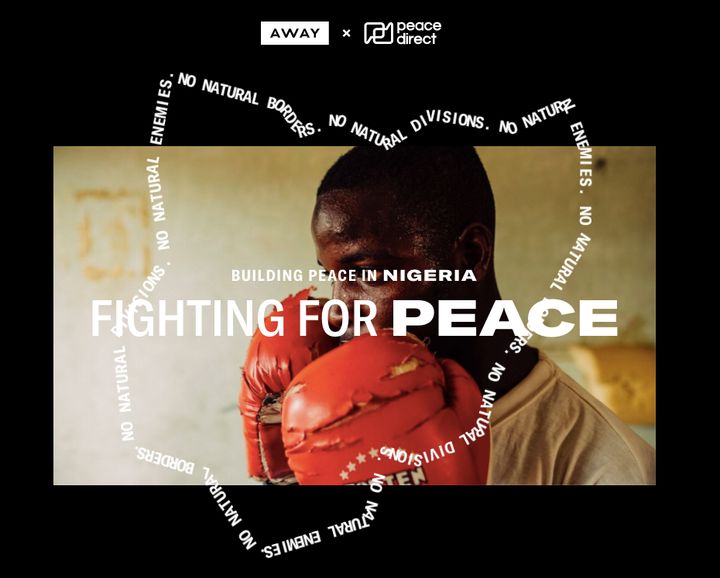
A little over three years ago, Michelle Obama held a sign that read #BringBackOurGirls to confront the abduction of over 300 Nigerian girls by Boko Haram, a militant Islamic terrorist group. Over 1,200 days later, 113 of those girls still remain missing. And, just a few months ago, the world was horrified by the photos and tweets from Bana Alabed, Lina Shamy and others in Aleppo during one of the longest sieges in modern time.
When these incidents of conflict and terrorism go viral it’s easy to feel helpless, overwhelmed, and the desire to “fix” what’s wrong. It’s easy to hashtag and share a post. It’s much harder to understand and grasp that what we get to swipe past, with one touch, is everyday life for those in areas of terror and deep-rooted pain. UNICEF reports one in nine children now grow up in war zones. Today, two billion people live in places designated as volatile. What’s “trending” for some is a lifestyle for these individuals.
For countries in peril, it takes a thoughtful, local approach to create and ensure sustainable change. An approach that understands the context of each conflict, removes any power dynamic in the helping relationship, and reminds locals of their own power to solve problems within their community. This is exactly what Peace Direct, an organization focused on stopping war and building peace, has been relentlessly doing around the world for the past 13 years. They partner with locals and organizations on the ground to stop violence and build healthy livelihoods.
Peace Direct causes teenage combatants charged with hundreds of deaths in DR Congo to release their child soldiers and reintegrate into society. They support youth who are disabled due to the Syrian war. They inspire individuals to unlearn what makes them perpetuate a cycle of war and learn how to be peacemakers instead. Peace Direct prevents youth from becoming involved with gangs by assisting them with learning a trade, starting a business, joining peace clubs or participating in a sport. They have expertise that changes the world and they’re the ones who are on the ground, transforming communities on the other side of our screens.
However, a challenge for social good campaigns and nonprofits like Peace Direct, is bridging the gap between trending and actually capturing actionable attention; ensuring there is not only short-lived awareness but action being taken by supporters. Most nonprofits are so invested in doing what they do best - changing the world - that it leaves little room to devote time and energy into the organization itself. For example, they may be unable to pay their staff what they deserve, run effective marketing campaigns, utilize tech or enhance their branding.
How can we expect to address the world’s most pressing problems when the ones solving them are trying to pour from an empty cup? How can we expect the stories of people in need to be heard when, in a world bombarded by content, they don’t have a platform that is visible?
It’s true that we absolutely need philanthropy for causes to survive. Yet, what can donors and investors do to ensure that causes and nonprofits actually thrive? Funding raised by nonprofits often rightfully dictate that donations must go directly to the people being served but this is often at the cost of keeping a nonprofit in a starvation cycle. The Stanford Social Innovation Review calls it “a vicious cycle... leaving nonprofits so hungry for decent infrastructure that they can barely function as organizations—let alone serve their beneficiaries.”
Fortunately, start-ups like Virtueconomy and organizations fighting “The Overhead Myth” are tackling this problem along with social impact strategists who get it. For Peace Direct, their partnership with Away is model for how companies can redefine how they do “good” business and go about creating social change.
Away designs luggage for modern travel. With the perspective that the world is a “shared place,” their why is “making the world a better place for everyone to live and visit.” For this reason Away started working with Peace Direct long before there was even a suitcase. Dylan Mathews, Chief Executive of Peace Direct, told me that their earliest meeting consisted of sitting in a small room around a cardboard box with Away co-founders Steph Korey and Jen Rubio and their first hire, Social Impact Strategist, Amirah Jiwa. Korey and Rubio were just starting Away but knew they wanted to ensure it would support international development and making a difference. Fast forward to August 2017; Away has over $20 million in sales under its belt and has only recently announced what they’ve been doing behind the scenes - donating a portion of their sales each month to Peace Direct. Little did their customers and community know that for the past year and a half, their purchases were helping to build peace around the world. This selfless, impact-first infused company culture is especially moving and almost unheard of.
What’s unique about the partnership is that every team at Away is committed to a Peace Direct project. They’ve devoted their skills and a percentage of their time to travel with Peace Direct and work closely with them. Their collaboration has resulted in a stunning website to serve as a platform showcasing the impact of Peace Direct and the stories of people they serve in a way like never before.
It seems like a new bar has been set for the way companies can make lasting impact and challenge the status quo of how nonprofits are supported. “Rather than use this partnership as a marketing tool for Away,” the company’s intention is to “put peacebuilding on the map and...encourage other companies to do the same with other lesser known causes.”
To catalyze the action needed beyond trending hashtags, one can only hope others follow their lead.
See the partnership at work by visiting their website here.
